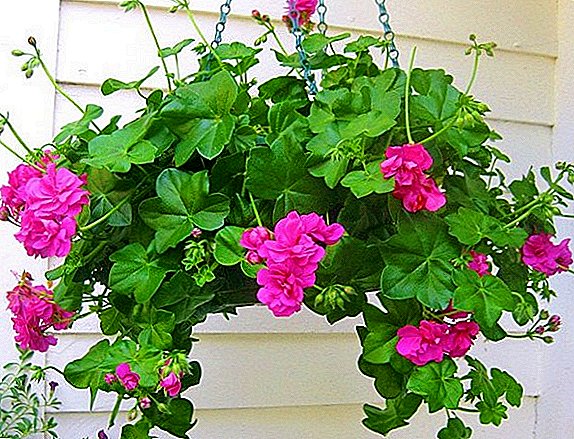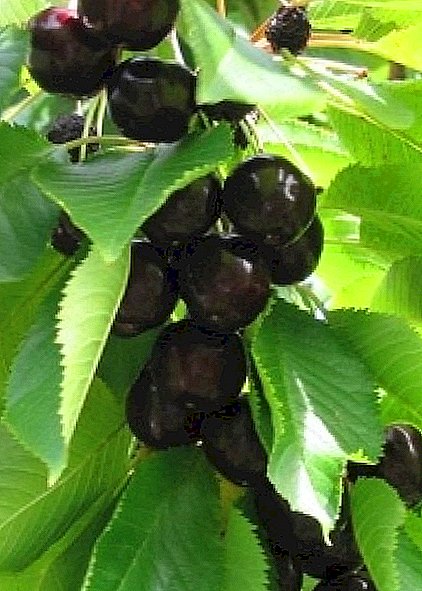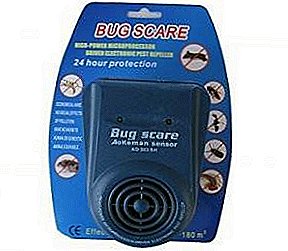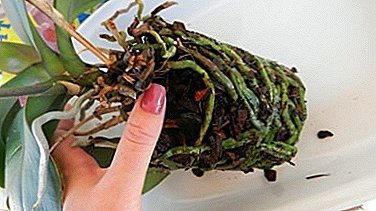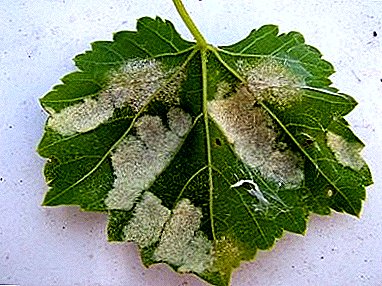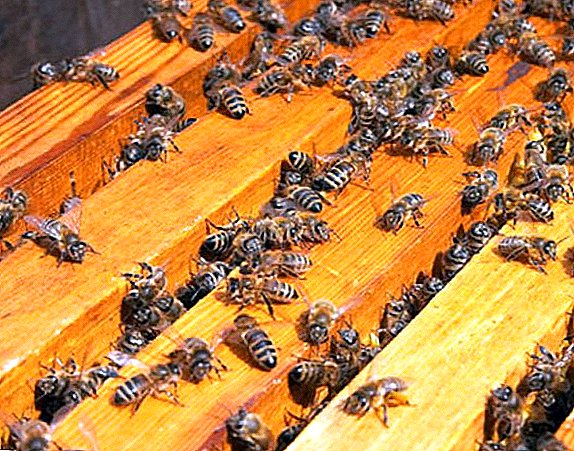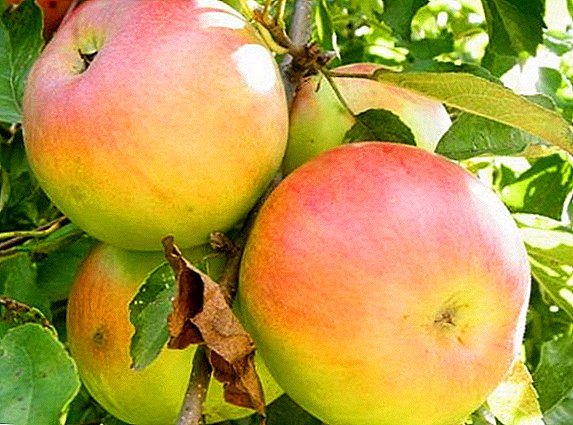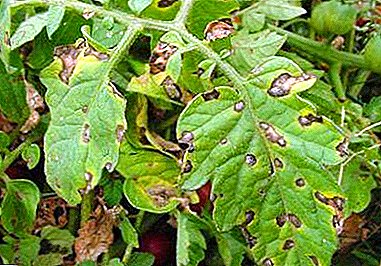
Alternaria is a fairly common disease that affects various plants at different stages of development. This disease is generated by imperfect fungi of the genus Alternaria.
Another name for Alternaria is dry or black spotting. It can be found everywhere, but the damage from this very dangerous disease is most noticeable in the southern regions.
How to recognize the disease in different cultures, you will learn in our article. We also recommend to watch a useful video on the topic.
What it is?
Black spot rape is also caused by Alternaria spp.. In this culture, the lower part of the plant is affected first, and then the disease spreads upwards. Black spots can develop on:
- pods;
- stems;
- leaves.
Where and how does it manifest itself?
 The disease makes itself felt in the stage of the appearance of buds and continues throughout the summer period. Alternaria is manifested on the parts of the plant in the form of brown and necrotic spots, on which dead tissue is visible. Brown spots with a dark patina, which consists of spores of the fungus, are formed on the damaged areas.
The disease makes itself felt in the stage of the appearance of buds and continues throughout the summer period. Alternaria is manifested on the parts of the plant in the form of brown and necrotic spots, on which dead tissue is visible. Brown spots with a dark patina, which consists of spores of the fungus, are formed on the damaged areas.
Under favorable conditions, these spots become visible 2-3 days after the lesion. After 2 days they appear gray spores with transverse and longitudinal partitions. Damaged parts become brittle and brittle..
Alternaria develops when alternating dry hot weather with night dew or rain. The best temperature for the development of this disease is + 24 ° C-30 ° C, the minimum - + 7 ° C.
What is dangerous?
The danger of Alternaria is to transfer spores to healthy plants.. They do it:
- insects;
- rains;
- wind.
IMPORTANT: Spores can persist for a long time in the remaining plants and soil, carrying out further primary infection. The disease leads to a 50% yield loss.
What cultures are striking?
The disease mainly affects the following cultures:
- tomatoes and cabbage;
- potato and pumpkin;
- pepper and sunflower;
- eggplants and zucchini;
- grapes and grains;
- carrots and onions;
- henbane and belladonna;
- dope and tobacco;
- hybrid petunia, etc.
- family of nightshade.
How to detect?
Alternaria can be detected by the following features. On the surface of the plant there are places that differ sharply from the healthy part. They are dented dark spots of irregular shape. Often wrinkles form on their surface. Rotting in Alternaria occurs as a dry rot..
General principles of protection and control
 There are measures common to all plants to protect and combat this serious disease. These include:
There are measures common to all plants to protect and combat this serious disease. These include:
- crop rotation;
- weed control;
- careful plant residues;
- use of exceptionally healthy and sustainable seed;
- seed dressing;
- fungicidal treatment.
Treatment with fungicides should be done before the symptoms of Alternaria appear on the plants.
Features of diagnosis and treatment in some cases
Early and late dry spotting occurs. With early spotting, 15-20 days before flowering begins, clear patches with bloom form, which merge with a strong lesion and the leaves turn yellow. In the future, they dry up. If the disease has touched the stems, then ulcers can be found on them. As a result, the plant will wither over time.
On tomatoes
In tomatoes, this disease is called zonal or dry spot.. It represents a danger to the plant, it appears immediately after the tomato seedlings are planted in a greenhouse or open soil.
This disease is much easier to prevent, insure against possible loss of the crop. It is necessary to clean the remnants of vegetation and follow the rules of crop rotation. According to them, tomatoes should not be planted in the place where they were planted before:
- potatoes;
- pepper;
- cabbage;
- eggplants.
There must be spatial isolation between tomatoes and potatoes.
On potato
Alternariosis in the root crop mainly appears in mid-June and lasts until autumn.. The disease prefers middle-late varieties. After the stems and leaves are damaged, there is a slowdown in the growth of tubers, which also become covered with dark spots, or even cease to form.
Alternaria development is favored by:
 lack of nitrogen;
lack of nitrogen;- drip moisture, which lasted more than 2 hours in a row;
- presence on the pest culture.
Before planting the tubers, it is recommended to treat them with such preparations:
- Baktofit;
- Integral;
- Ridomil Gold;
- Acrobat;
- Fast
The first treatment should be done no later than the weather conditions favorable for the development of the disease.. The following manipulations are carried out with a break of 10-14 days.
On wheat
Alternaria on wheat crops begins to manifest itself during flowering and when the grain is filled with milky ripeness. This can be seen from the dark spots appearing on the spikelet scales. Subsequently, during the period when the grain matures, blackening of the embryo is noted. Flour from this germ has a dark color and has low baking qualities. Plants grown from these seeds do not grow well and develop, which leads to a decrease in yield. The methods of struggle are the same as in cases with other cultures.
On grapes
The first signs of grape disease occur in May.. Light silver spots appear on the leaves and shoots. The skin of the berries begins to shine, then a dark fungal plaque forms on it. They become shriveled, stop ripening, die off, and those that still ripen, acquire an unpleasant taste.
For the treatment of Alternaria grapes used drugs:
- Ridomil Gold;
- Oxy;
- Garth
On the sunflower
The disease is fixed during the period of seed application, most often for 20-25 days after flowering has ended. On the back of the basket and the expanded axis of the inflorescence appears brown oval spot, which extends further. There is a gradual defeat of the internal tissues of the basket and the whole plant.
As a result, the nutrients cease to flow to the seeds, the basket becomes brown. Baskets and seeds become puny, often infection leads to the fact that the stems break and the plant dies.
In order to prevent the development of sunflower alternariosis, it is necessary to observe general protective measures, improve soil fertility, and harvest the crop in optimal early terms. Do not forget to use chemical methods of struggle.
On the bow
The disease is easily seen by watery white spots on feathers.. Reddish spots often appear on their edges, and when they are combined with white, onions die off very quickly. It is recommended to process onions with fungicides when there are already signs of the disease on it, and moisture remains on feathers for 11 hours.
On the zucchini
 Initially, the disease on zucchini appears as small spots of white and brown, then the surface of vegetables is covered with velvety black patina. They gradually increase in size, then cover the entire sheet, which fades and dies.
Initially, the disease on zucchini appears as small spots of white and brown, then the surface of vegetables is covered with velvety black patina. They gradually increase in size, then cover the entire sheet, which fades and dies.
The diseased plant develops poorly and grows. To avoid this, you need to take appropriate measures.
It is necessary to destroy the weeds, away from the harvested collected tops. In the presence of Alternaria, bushes with zucchini should be sprayed with fungicides..
Preventive measures
- In order to prevent to prevent the occurrence of Alternaria, spraying of plants with appropriate solutions will be the best way.
- Be sure to disinfect the soil, in a timely manner to destroy the already diseased plants.
- We must choose varieties that are resistant to this disease.
- Tall plants need to tie up, it is recommended to remove the lower leaves.
- It is impossible to prevent mechanical damage to tubers.
- Affected potato must be rejected at the time.
Use fertilizers correctly.. It is necessary that the concentration of nitrogen in the soil is not exceeded. Be sure to make it such mineral fertilizers, which contain potassium.
If it is possible to identify the alternaria at the initial stage, then it will be possible to cope with it in one season. However, it cannot be argued that the disease will not reappear, so it is imperative that preventive and agronomic care measures be taken. If all the rules are followed, then the plants are not threatened with any diseases.


 lack of nitrogen;
lack of nitrogen;

